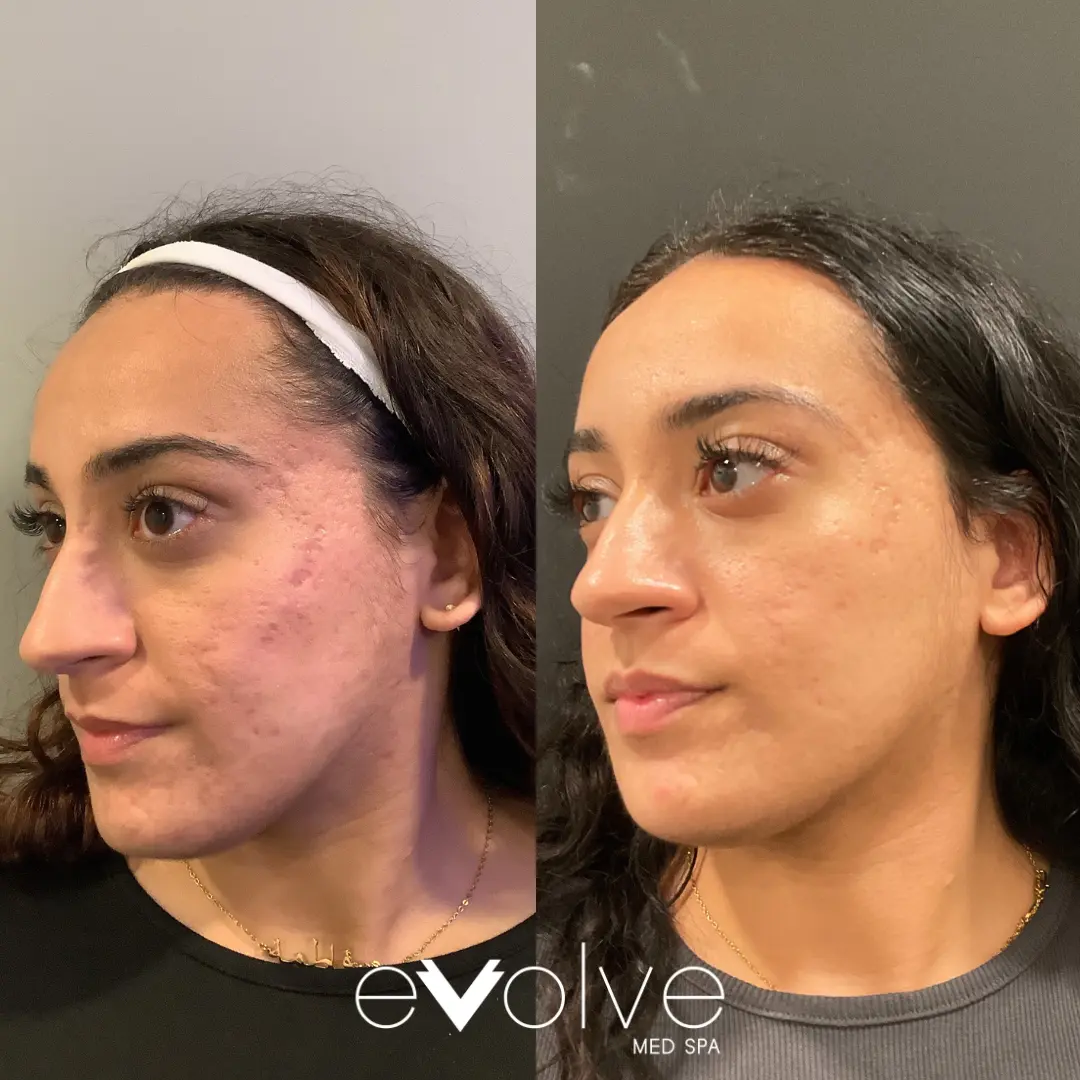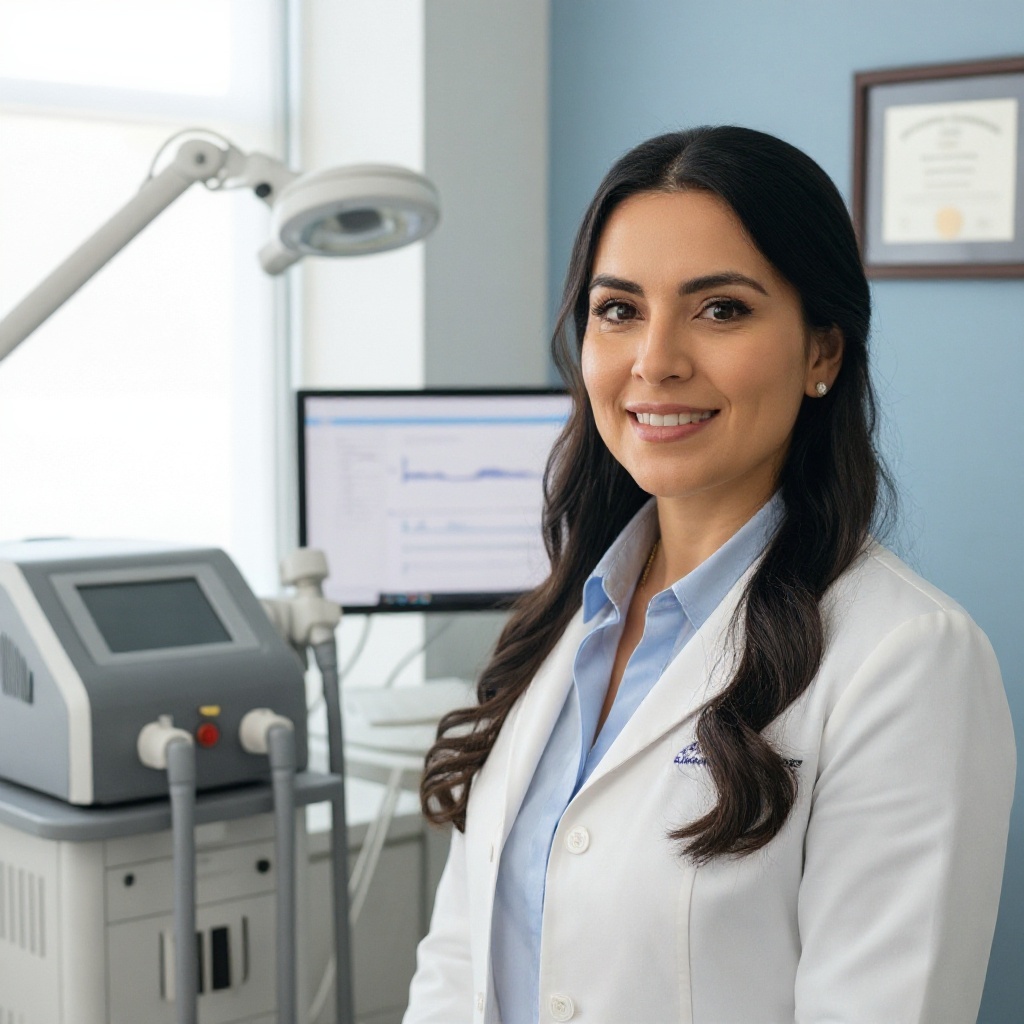Microneedling with PRP: The Ultimate Guide to the Vampire Facial

Key points
- Microneedling (Collagen Induction Therapy): This is a cosmetic procedure that uses a device with tiny, sterilized needles to create controlled micro-injuries on the skin's surface. According to Advanced Dermatology and Skin Surgery, these micro-wounds trigger the body's natural healing process, stimulating the production of collagen and elastin—the proteins responsible for skin's structure and elasticity.
Microneedling combined with Platelet-Rich Plasma (PRP), popularly known as the "Vampire Facial," has emerged as a leading treatment in aesthetic medicine for its ability to naturally rejuvenate the skin. This procedure harnesses the body's own healing mechanisms to address common skin concerns like fine lines, acne scars, and uneven texture.
This comprehensive guide synthesizes clinical findings, expert opinions, and real-world results to provide a complete overview of what you can expect from microneedling with PRP.
What is Microneedling with PRP?
To understand the combined treatment, it's essential to look at its two core components:
Microneedling (Collagen Induction Therapy): This is a cosmetic procedure that uses a device with tiny, sterilized needles to create controlled micro-injuries on the skin's surface. According to Advanced Dermatology and Skin Surgery, these micro-wounds trigger the body's natural healing process, stimulating the production of collagen and elastin—the proteins responsible for skin's structure and elasticity.
Platelet-Rich Plasma (PRP): PRP is a concentrate derived from your own blood. As explained by Johns Hopkins Medicine, blood is drawn and placed in a centrifuge, which separates the platelets from other blood cells. This resulting plasma is rich in growth factors, powerful proteins that promote tissue repair and regeneration.
When used together, microneedling creates channels for the PRP to penetrate deeper into the skin, significantly amplifying the regenerative effects and leading to enhanced results compared to microneedling alone.
The Step-by-Step Procedure: What to Expect
A typical microneedling with PRP session lasts between 60 to 90 minutes and follows a structured process to ensure safety and efficacy.
- Consultation & Preparation: The treatment begins with a consultation to assess your skin and discuss your goals.
- Blood Draw: A small amount of blood, similar to a standard lab test, is drawn from your arm.
- PRP Separation: The blood is placed in a centrifuge to spin at high speeds, separating the platelet-rich plasma from the rest of the blood components.
- Numbing: While the PRP is being prepared, a topical numbing cream is applied to your face to minimize discomfort during the procedure. This typically takes 30-45 minutes to take effect.
- Microneedling: The practitioner uses a professional-grade microneedling device (like a SkinPen) to create micro-punctures across the target area.
- PRP Application: The concentrated PRP is then applied topically and massaged into the treated skin, allowing the growth factors to seep deep into the micro-channels.
- Post-Treatment Care: A soothing serum or balm may be applied to calm the skin. You will receive specific aftercare instructions to follow at home.
Key Benefits of Combining Microneedling with PRP
The synergy between microneedling and PRP delivers a range of benefits for overall skin health and appearance. The addition of PRP is believed to speed up the healing process and enhance the final outcome.
Key benefits include:
- Enhanced Collagen & Elastin Production: The growth factors in PRP supercharge the collagen-stimulating effects of microneedling for firmer, plumper skin.
- Improved Skin Tone and Texture: The treatment helps smooth rough skin, shrink large pores, and create a more even, radiant complexion.
- Reduction of Scars: It is highly effective for reducing the appearance of atrophic acne scars, surgical scars, and even some stretch marks.
- Diminished Fine Lines and Wrinkles: Increased collagen helps fill in fine lines and soften deeper wrinkles, particularly around the eyes and mouth.
- Treatment for Hyperpigmentation: It can help fade sun damage, age spots, and other forms of discoloration.
 Significant improvement in acne scarring after a series of microneedling with PRP treatments. Image Source: Evolve Med Spa
Significant improvement in acne scarring after a series of microneedling with PRP treatments. Image Source: Evolve Med Spa
Does Microneedling with PRP Actually Work? A Look at the Evidence
While widely popular, the clinical efficacy of microneedling with PRP is a topic of some debate, largely due to a lack of standardization in treatment protocols.
The Case for Efficacy
Many studies demonstrate positive results, especially for specific conditions. A 2016 study cited by Medical News Today on patients with acne scars found that microneedling with PRP led to a 62.20% improvement, compared to 45.84% with microneedling and distilled water. Similarly, a recent study highlighted by Dermatology Times found that for treating melasma, delivering PRP via microneedling was significantly more effective than via microinjections.
The Counterpoint and Nuances
On the other hand, some research presents conflicting results. A 2024 randomized clinical trial published by the National Institutes of Health (NIH) involving women aged 45 and older found no notable macroscopic improvement in facial aging signs (like wrinkles and skin laxity) with PRP injections compared to saline. The researchers suggest that factors like advanced age and the evaluation methods used may have contributed to these findings.
This discrepancy highlights several key points:
- Lack of Standardization: The way PRP is prepared and its final platelet concentration can vary significantly between clinics, affecting results.
- Patient Factors: Age, skin condition, and lifestyle play a crucial role in the outcome. Younger skin with better regenerative capacity may respond more robustly.
- Treatment Goals: The procedure appears to have more consistent success for scarring and textural issues than for significant age-related laxity in older patients.
Conclusion: Microneedling with PRP can be highly effective, but results are not guaranteed for everyone. A consultation with a board-certified dermatologist is crucial to set realistic expectations.
Microneedling with PRP vs. Standard Microneedling
The primary question for many is whether the extra cost of adding PRP is worth it. The main differences lie in the intensity and longevity of the results.
| Feature | Standard Microneedling | Microneedling with PRP |
|---|---|---|
| Mechanism | Stimulates collagen via micro-injury. | Micro-injury + growth factors for enhanced regeneration. |
| Results | Good improvement in texture and tone. | More significant improvement, especially for scars/wrinkles. |
| Healing Time | Redness and swelling for 1-3 days. | PRP may accelerate healing, potentially reducing redness faster. |
| Longevity | Results typically last 3-5 months. | Results can last 6-18 months with proper maintenance. |
| Cost | More affordable. | Higher cost due to blood processing. |
Adding PRP elevates the treatment from a temporary improvement to a longer-term investment in skin health, offering more profound and durable regeneration.
Planning Your Treatment: Cost, Sessions, and Longevity
How Many Sessions Do You Need?
For optimal results, a series of treatments is almost always necessary.
- Initial Series: Most providers recommend 3 to 6 sessions.
- Spacing: Each session should be spaced 4 to 6 weeks apart to allow the skin to heal and regenerate.
- Maintenance: To maintain results, a follow-up session is often suggested every 6 to 12 months.
What is the Average Cost?
The cost of microneedling with PRP varies based on geographic location, the provider's expertise, and the size of the treatment area.
- Per Session: Expect to pay between $500 and $1,300 per session.
- Package Deals: Many clinics offer packages for a series of treatments, which can reduce the overall cost.
This procedure is considered cosmetic, so it is not covered by medical insurance.
 Illustration of microneedles creating channels for PRP to penetrate the dermis and stimulate collagen. Image Source: Mittelman Plastic Surgery
Illustration of microneedles creating channels for PRP to penetrate the dermis and stimulate collagen. Image Source: Mittelman Plastic Surgery
Safety, Side Effects, and Recovery
Microneedling with PRP is considered a safe procedure with minimal downtime, especially since the PRP is derived from your own body, eliminating the risk of allergic reactions.
Common Side Effects
Immediately after the procedure, the skin will appear red and may feel tight, similar to a mild sunburn. These effects are temporary and usually subside within a few days. Common side effects include:
- Redness and inflammation
- Mild swelling
- Slight bruising or pinpoint bleeding
- Soreness or tenderness
Potential Risks and Contraindications
While generally safe, the treatment is not suitable for everyone. You should avoid this procedure if you:
- Are pregnant or breastfeeding.
- Have active acne, skin infections (like herpes), or certain skin conditions like eczema or psoriasis on the treatment area.
- Have a history of scarring easily or developing keloids.
- Suffer from blood or platelet disorders.
- Have used isotretinoin (Accutane) within the last six months.
Aftercare and Recovery
Proper aftercare is crucial for achieving the best results and preventing complications.
- Avoid Sun Exposure: Protect your skin with a broad-spectrum sunscreen (SPF 30+).
- Be Gentle: Use only a gentle cleanser and moisturizer for the first 72 hours.
- Avoid Harsh Products: Do not use exfoliants, retinoids, or alcohol-based products for several days.
- Stay Hydrated: Drink plenty of water to support the healing process.
Most people can return to their normal activities the day after treatment, though social downtime may be preferred for 1-3 days while redness subsides.
The Future of Skin Rejuvenation: Alternatives to PRP
While PRP remains a gold standard, new biostimulators are emerging as powerful alternatives that can also be combined with microneedling.
- Bio-Engineered Growth Factors: Serums containing lab-created growth factors (like Ariessence PDGF) offer a consistent formulation without the need for a blood draw, making the treatment quicker and non-invasive.
- Poly-L-Lactic Acid (PLLA): Diluted Sculptra can be applied topically during microneedling to stimulate long-term collagen production and improve skin firmness without adding volume, ideal for areas like the neck and décolletage.
- Polydeoxyribonucleotide (PDRN): Derived from salmon DNA, PDRN has potent anti-inflammatory and regenerative properties, making it an excellent choice for sensitive, barrier-compromised, or rosacea-prone skin.
The Final Verdict
Microneedling with PRP is a powerful, natural approach to skin rejuvenation that offers more significant and longer-lasting results than microneedling alone. While its effectiveness can vary, it has shown remarkable success in improving skin texture, reducing scars, and diminishing the signs of aging.
The key to a successful outcome is choosing a qualified, board-certified dermatologist or plastic surgeon who can tailor the treatment to your specific needs and provide a realistic assessment of the results you can achieve.

About the author
Elena Vance, MD, is a double board-certified dermatologist and pediatric dermatologist. She is an assistant professor of dermatology at a leading medical university in California and is renowned for her research in autoimmune skin disorders.